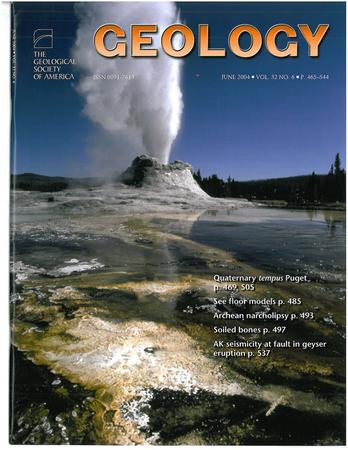加州石笋中最后一次消冰期火-水-气候-植被动态的有机分子记录
IF 4.6
1区 地球科学
Q1 GEOLOGY
引用次数: 0
摘要
现代加州野火的反复无常强调了了解美国西部火灾、水文气候和植被之间长期联系的重要性。我们利用埋在石笋中的热源多环芳烃(PAHs)的丰度和分布作为内华达山脉中部(加利福尼亚州)最后一次消冰期过去火灾动态的新代理。在Heinrich Stadial 1 (HS1)中,多环ah通量在多世纪分辨率下显示了两个显著增加的野火活动时期(约17.7 ~ 17.6 kyr B.P.和15.4 ~ 14.9 kyr B.P.),这一时期与全球变冷和美国西部主要的水文气候变化有关。第三个较弱的野火活动增加发生在alore ød−Younger Dryas过渡时期(AL-YD;约13.0−12.7百哩(B.P.)。多环芳烃(PAH)分布和花粉记录表明,植被组成对野火具有潜在的控制作用:HS1期间的火灾活动高峰表现为较低的燃烧温度和较高的干旱草本植物和灌木的区域比例,而AL-YD表现为异常高的火灾活动,表现为较高的燃烧温度和较低的这些物种的比例。石笋δ13C、流体包裹体衍生的氘过量和磷浓度的变化表明,在水分有限的火灾条件下,有效水分减少的百年至千年尺度时期提供了有利于野火活动增加的水文气候条件。与区域木炭记录的比较突出了多环芳烃在提供更完整的区域火灾记录方面的效用,这种记录较少受到燃料类型的影响。本文章由计算机程序翻译,如有差异,请以英文原文为准。
Organic molecular records of fire–hydroclimate–vegetation dynamics through the last deglaciation archived in a California stalagmite
The volatility of modern California wildfires emphasizes the importance of understanding long-term connections between fire, hydroclimate, and vegetation in the western United States. We use the abundance and distributions of pyrogenic polycyclic aromatic hydrocarbons (PAHs) entombed within a stalagmite as a novel proxy for past fire dynamics through the last deglaciation in the central Sierra Nevada (California). PAH flux at multi-centennial resolution reveals two periods of significantly increased wildfire activity (ca. 17.7−17.6 kyr B.P. and 15.4−14.9 kyr B.P.) within Heinrich Stadial 1 (HS1), a time associated with global cooling and major hydroclimatic shifts across the western United States. A third, weaker, increase in wildfire activity occurred at the Allerød−Younger Dryas transition (AL-YD; ca. 13.0−12.7 kyr B.P.). PAH distributions and pollen records suggest vegetation composition provided an underlying control on wildfire: peak fire activity during HS1 is characterized by lower combustion temperatures coincidental with higher regional proportions of arid herbs and shrubs, while the AL-YD exhibits unusually high fire activity characterized by higher-temperature burning and low proportions of these species. Changes in stalagmite δ13C, fluid-inclusion−derived deuterium excess, and phosphorus concentrations indicate that centennial- to millennial-scale periods of reduced effective moisture provided hydroclimatic conditions conducive to elevated wildfire activity within a moisture-limited fire regime. Comparison with regional charcoal records highlights the utility of PAHs to provide a more complete record of regional fire that is less biased by fuel type.
求助全文
通过发布文献求助,成功后即可免费获取论文全文。
去求助
来源期刊

Geology
地学-地质学
CiteScore
10.00
自引率
3.40%
发文量
228
审稿时长
6.2 months
期刊介绍:
Published since 1973, Geology features rapid publication of about 23 refereed short (four-page) papers each month. Articles cover all earth-science disciplines and include new investigations and provocative topics. Professional geologists and university-level students in the earth sciences use this widely read journal to keep up with scientific research trends. The online forum section facilitates author-reader dialog. Includes color and occasional large-format illustrations on oversized loose inserts.
 求助内容:
求助内容: 应助结果提醒方式:
应助结果提醒方式:


